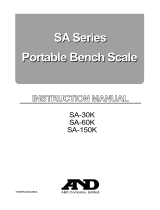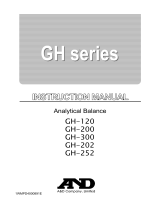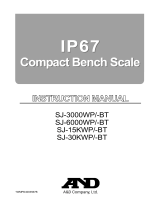
1
CONTENTS
1. INTRODUCTION .............................................................................................................3
2. UNPACKING ...................................................................................................................3
3. PART NAMES AND FUNCTIONS...................................................................................4
4. SETTING UP...................................................................................................................5
4-1. Setting up your balance.................................................................................................................5
4-2. Power source.................................................................................................................................5
5. OPERATION....................................................................................................................6
5-1. Turning the power ON and OFF.....................................................................................................6
5-2. LCD backlight................................................................................................................................6
5-3. Units ..............................................................................................................................................7
5-4. Selecting a weighing unit...............................................................................................................8
5-5. Basic operation..............................................................................................................................8
5-6. Weighing range for the EW-i series...............................................................................................9
5-7. Counting mode (pcs) ...................................................................................................................10
5-8. Percent mode (%)........................................................................................................................11
6. COMPARATOR .............................................................................................................12
6-1. Setting example...........................................................................................................................12
7. CALIBRATION ..............................................................................................................14
7-1. Calibration using a weight............................................................................................................14
7-2. Gravity acceleration correction....................................................................................................16
8. FUNCTIONS..................................................................................................................17
8-1. Key operation ..............................................................................................................................17
8-2. Entering the function setting mode ..............................................................................................17
8-3. Setting example...........................................................................................................................18
8-4. Storing weighing units..................................................................................................................19
8-5. Function list .................................................................................................................................20
9. RS-232C SERIAL INTERFACE.....................................................................................22
9-1. Interface specifications................................................................................................................22
9-2. Data format..................................................................................................................................23
9-3. Data output mode........................................................................................................................23
9-4. Command mode..........................................................................................................................24
10. ID NUMBER AND GLP................................................................................................25
10-1. Setting the ID number................................................................................................................25
10-2. GLP report.................................................................................................................................26





























